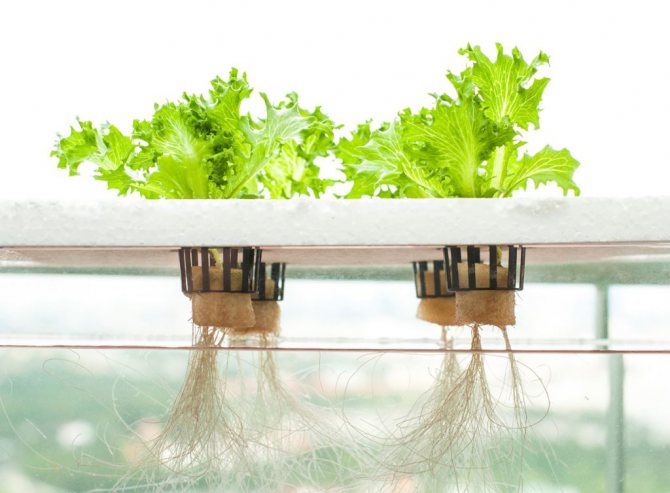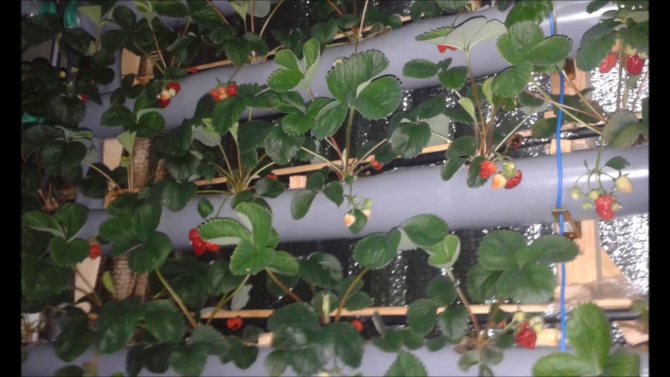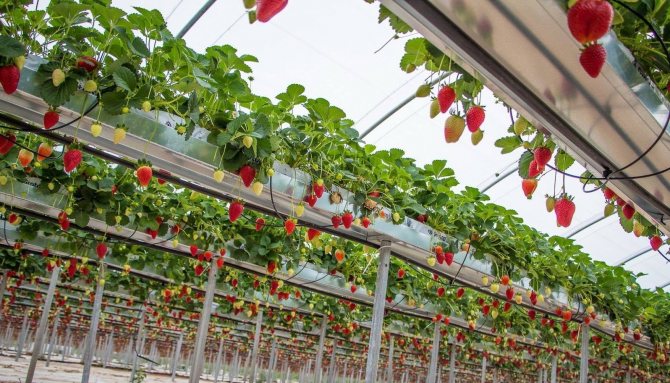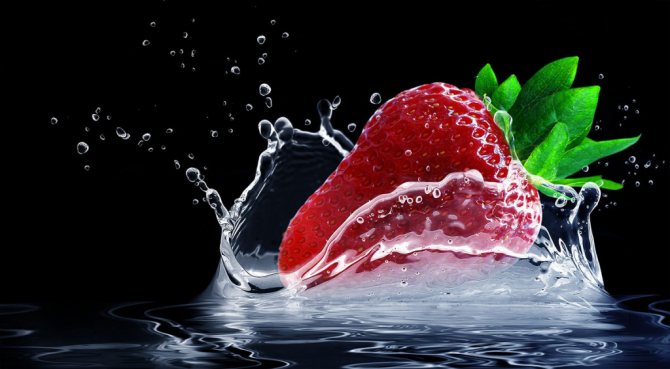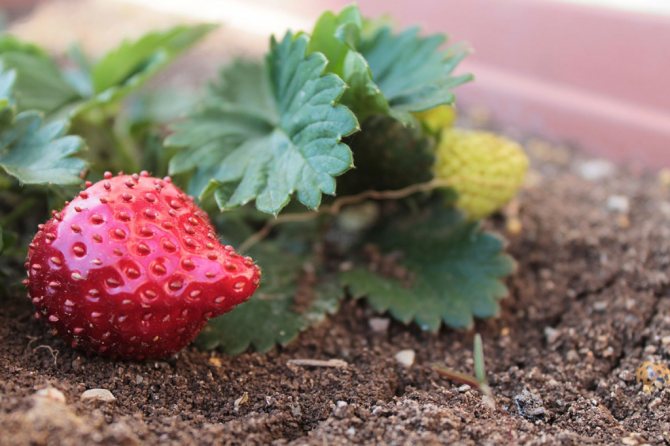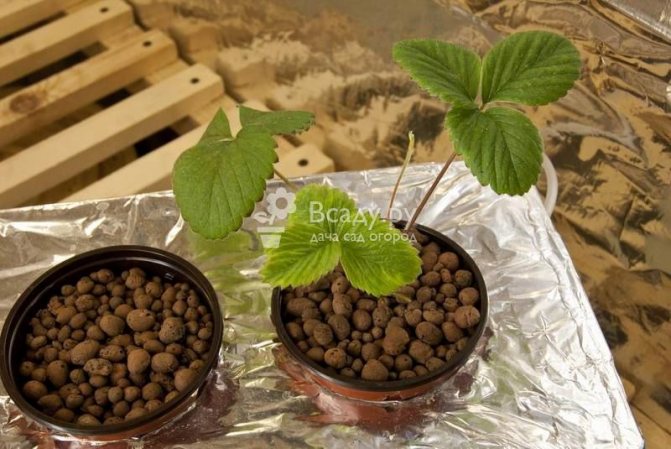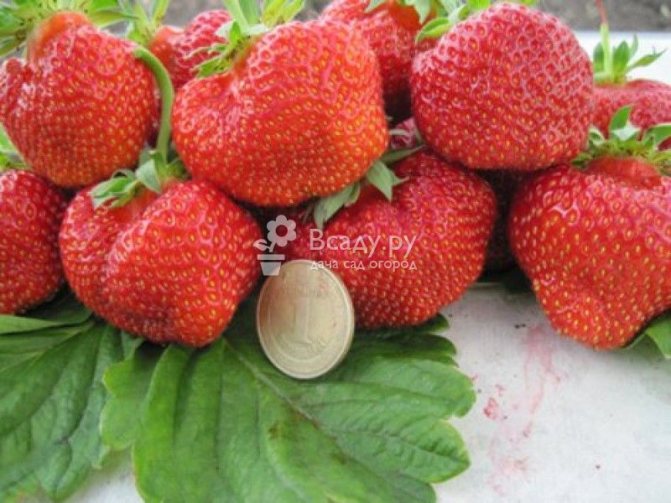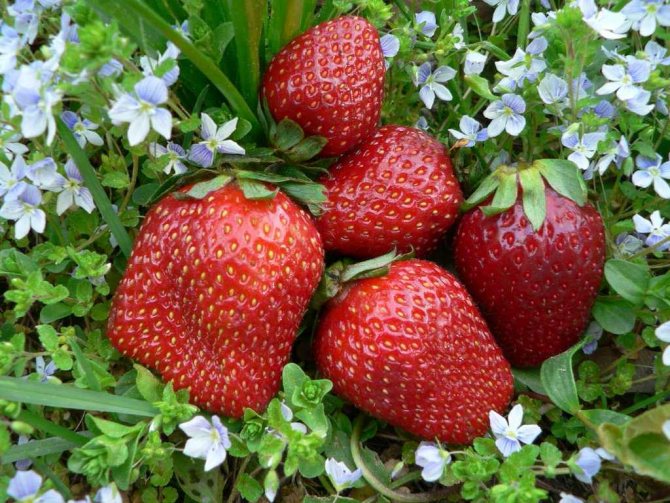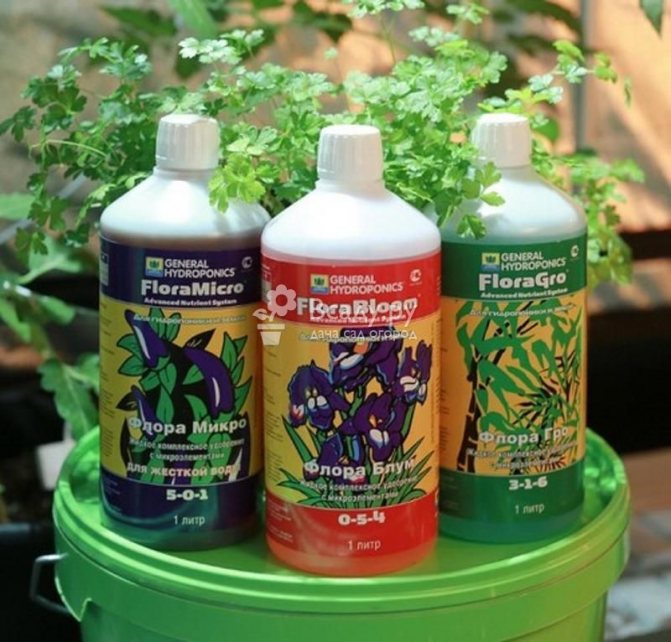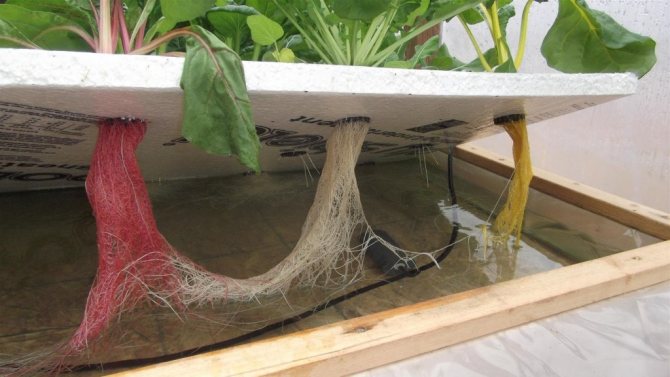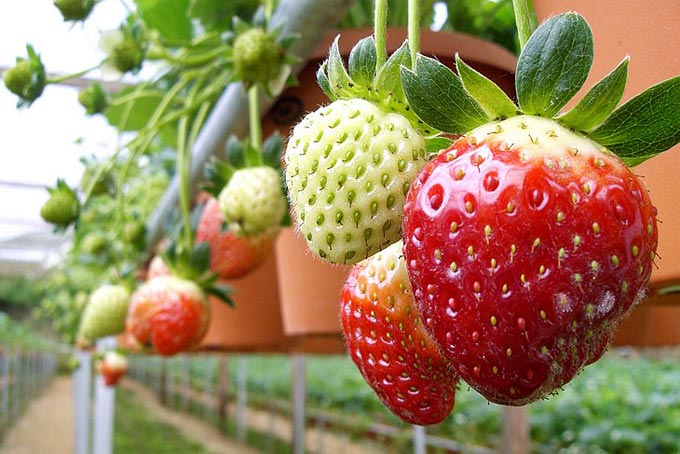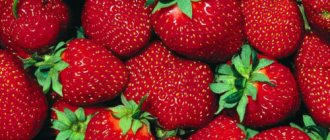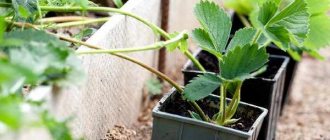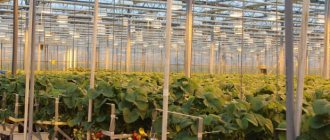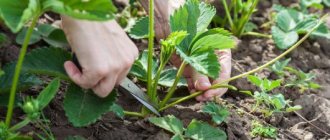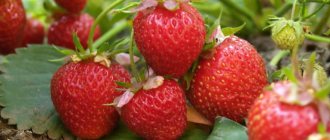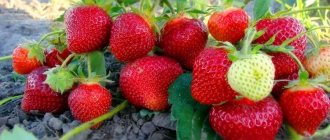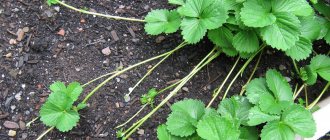Strawberries are a “berry” (from the point of view of botany, “berries” of strawberries are false, in fact, they are an overgrown receptacle with strawberry fruits - nuts), rich in vitamin C. It also contains a large amount of calcium, vitamin A and magnesium.
In central Russia, strawberries in the open field can be grown from mid to late summer. For whom, in order to get a strawberry harvest all year round indoors, you can use the hydroponic growing method, in particular, the drip irrigation system.
To do this, you will need:
- hydroponic plant
- container for planting
- substrate
- correct nutrient solution
So how do you make your own strawberry hydroponic nutrient solution and what characteristics should it have?
What is hydroponics all about?

The simplest analogue of technology is the ancient gardens of Semiramis, classified as the famous seven wonders of the ancient world. But the method proposed by scientists today is more efficient, the presence of automated systems. The essence of the technology is the cultivation of plants on special artificial substrates, without the use of soil.
The culture is placed in special conditions, providing an optimal growing regime:
- heat;
- lighting;
- power supply;
- moisture.
On a note! The term was introduced into science by a biologist from the United States, William F. Guerrick (University of California). He tried out the hydroponic pool method in the 1920s.
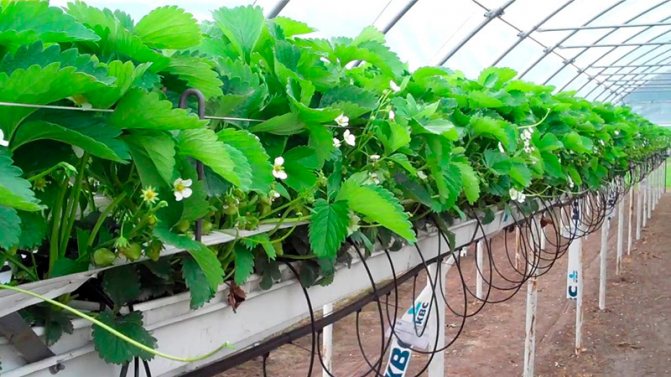

Nutrition does not take place at the expense of the soil, but due to the intake of nutrients by the roots from the solutions supplied to the substrate. The emergence of weeds, soil depletion are excluded, there is no need to constantly apply fertilizers, water the plantings.
If in the open field the harvest of garden strawberries depends on weather conditions, agricultural technology, soil fertility, pest activity, then with hydroponic technologies most of the problems disappear.
The pros of hydroponics:
- full control over the development of plants;
- ease of growing;
- environmentally friendly products;
- saving water;
- easy care (no weeding, loosening);
- rapid growth of bushes;
- high yields, subject to proper agricultural technology;
- the ability to grow berries in any season and even all year round;
- high profitability, which is why hydroponic systems are often used to grow strawberries on an industrial scale (a profitable business line).


Of the shortcomings, the need to maintain a certain mode of humidity, temperature, lighting is noted. It is important to use only high quality nutrient composition, special substrate and varieties suitable for hydroponics. Any violation leads to a slowdown in growth, and even to loss of seedlings.
Advantages and disadvantages of the method
Like any of the many indoor strawberry farming methods, hydroponics has its own characteristics, advantages and disadvantages.
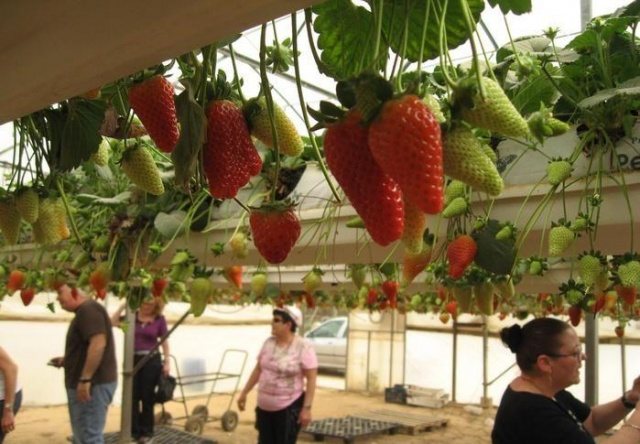

Benefits of hydroponic strawberry cultivation:
- Any heated room is suitable for plant cultivation.
- The area of the room can be used as efficiently as possible.
- Facilitated plant care.
- The daily presence of a person and his constant participation in the processes is not required. In case of an urgent need to go somewhere, the plants will feel great unattended for several weeks.
- The yield of hydroponically grown strawberries is several times higher than the yield of similar varieties grown in any other way.
- When grown by this method, no land is required, and all the necessary micro and macro elements of the plant are obtained through the nutrient solution in full. That is why they develop well and direct all their energy to intensive fruiting.
- The hydroponic system allows plants to receive oxygen and various fertilizing in a timely manner and in the required amount.
- Plants grown in optimal conditions are not susceptible to various diseases.
- Harvesting is very easy.
- In technological processes, pesticides that are harmful to health are not used, since when optimal conditions are created, plant diseases are excluded.
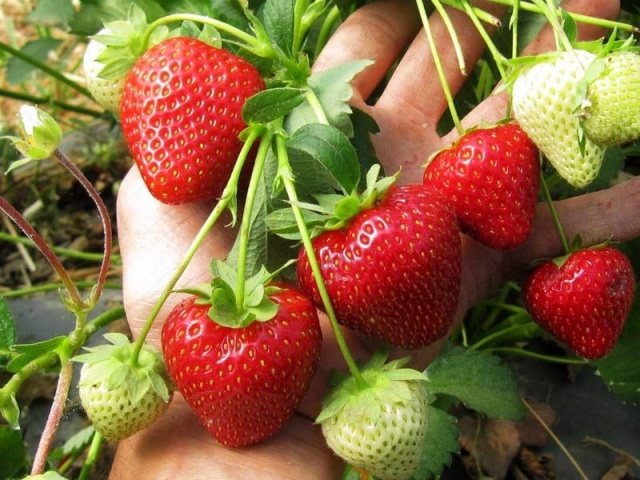

However, the hydroponic method of growing strawberries has its drawbacks:
- creating a hydroponic system and its maintenance requires high professionalism and highly specialized knowledge;
- high material costs for the creation and maintenance of the system;
- high energy consumption.
There are few of them, so most consider this option to be acceptable.
Technology features
Growing strawberries without soil is widely practiced in Holland and other European countries. The method, called "hydroponics", allows you to increase the yield of the crop, to get berries all year round.
Power supply systems
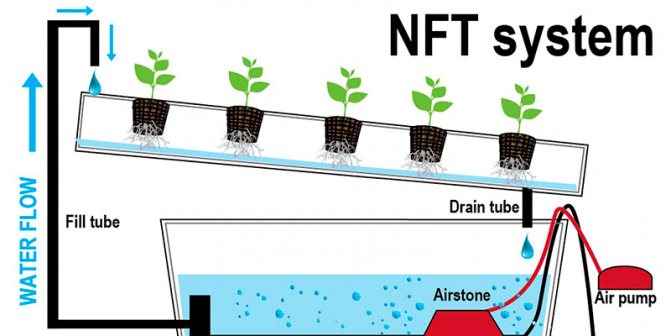

In order to provide plants with nutrition, various systems are used:
- passive (the solution is supplied by capillaries);
- active (the nutrient composition circulates due to the action of pumps).
Dozens of hydroponic modules have been developed, designed for various conditions (see diagram in the photo).
Basic types:
- installation of a nutrient layer. The solution with the necessary components is supplied to the substrate using water pumps. Plants are planted in separate containers with the bottom raised above the nutrient layer. With growth, the roots reach the desired level and receive nutrition;
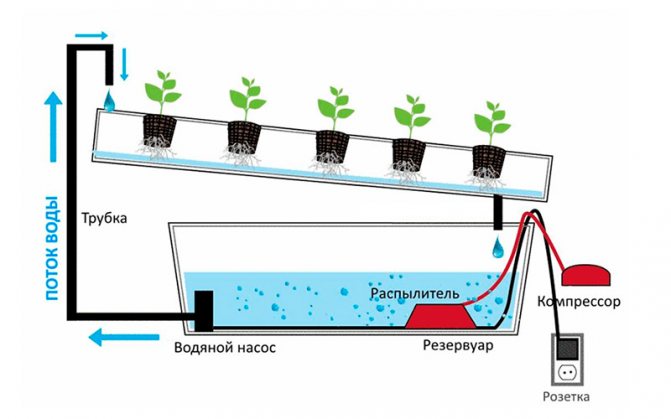

- deep water system. Feature - direct contact of the roots of garden strawberries with an aqueous solution. "Minus" - the possibility of root rot;
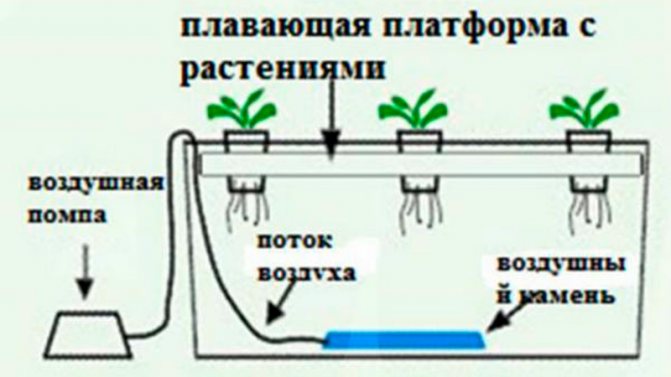

- drip technology. The solution is fed in portions, the substrate is constantly saturated;
- intermittent flooding - used in the cultivation of strawberries on an industrial scale. The substrate is poured with a nutrient solution from the pipes, then it is completely removed;
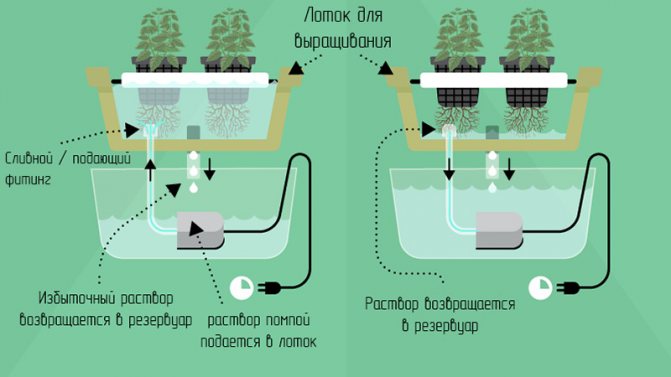

- aeroponics - plants are grown in a foggy environment. The root system is supplied with an aerosol containing essential nutrients;
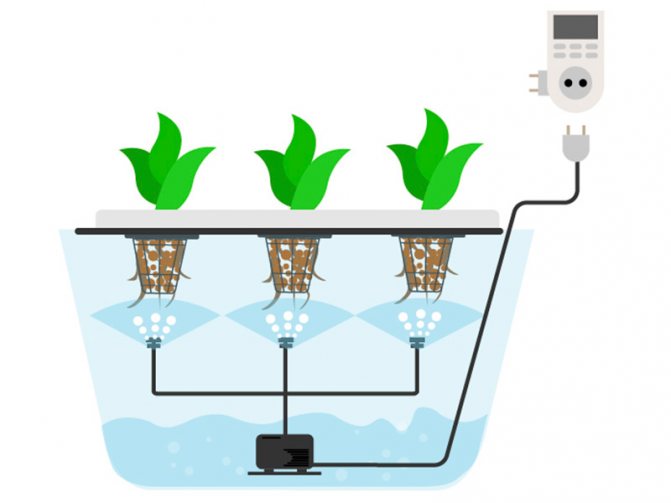

- drip irrigation.
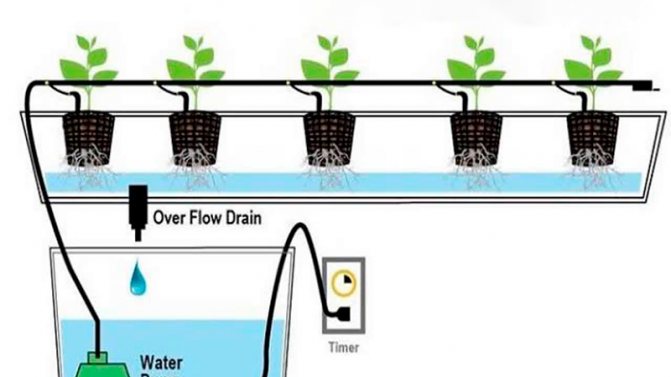

Of the listed modules for garden strawberries, only deep-sea technology is not used, as the plants are susceptible to high humidity. At home, the best option is drip, in which power is supplied to the roots of plants through tubes under pressure.
Installation advantages and disadvantages
Before using hydroponic equipment, you need to familiarize yourself with the main advantages and disadvantages of this method of growing strawberries. The advantages of the technique include:
- Regulation of the intake of nutrients. By using hydroponics, it is easier for gardeners to control the nutrition of the berries they grow. This allows you to make sure that only those nutrients that the plant lacks get into the strawberry root system.
- Reduced water consumption. It is no secret that a large amount of water is needed for the normal growth of strawberries. However, when grown hydroponically, the liquid will not be absorbed into the water, and therefore a lot of water can be saved when watering.
- Increase the vitality of the bushes. Hydroponically grown plants have a strong immune system that protects them from many diseases.
- Accelerated biomass growth.The hydroponic method helps to build up green mass. The growth of bushes is improved due to the fact that the nutrient solutions used contain a lot of nitrogen components.
However, this technique has several disadvantages, which include the following:
- Constant temperature control. Within the root zone, temperature indicators should be at the level of 17-20 degrees. At an elevated temperature of 30-35 degrees above zero, the root system stops developing and begins to die off.
- Not suitable for all varieties of strawberries. Not all varieties of berries can be grown hydroponically. Therefore, it is recommended to select in advance the plants that can be cultivated in this way.
Types of substrates
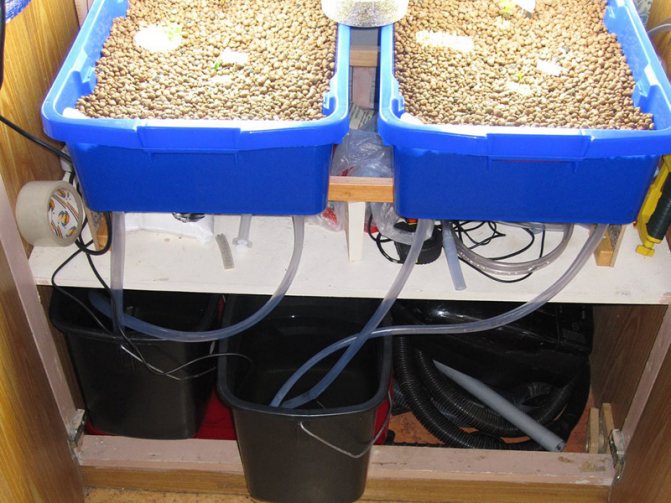

The soilless technology, known as hydroponic strawberries, means no soil is used. Instead, plants are placed on substrates. The requirements for them are strict:
- dense and at the same time loose structure;
- moisture capacity;
- porosity;
- air capacity.
On a note! Hydroponic substrates are a support, not a carrier of plant nutrition.
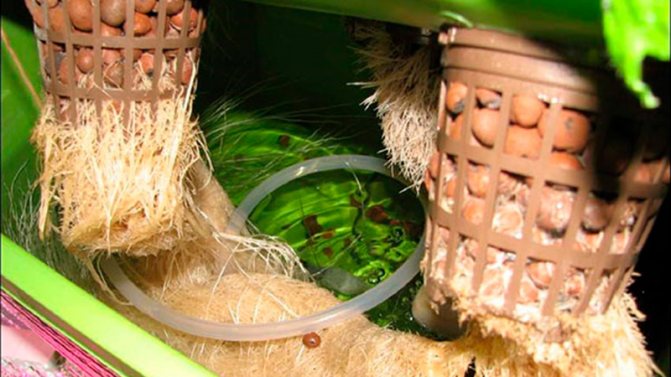

For strawberries, the most suitable are:
- peat;
- mineral wool;
- coconut fiber and shavings;
- expanded clay;
- a mixture of vermiculite and perlite.
Place substrates in plastic containers, pipes, and other containers.
We make a simple hydroponic system with a wick
The wick system is one of the most inexpensive and economical. It consists in the fact that wicks immersed in a nutrient solution are brought to plants in any substrate. Under the action of capillary forces, nutrients are delivered directly under the roots of plants.
Tools and materials
Wick irrigation is suitable for plants that are in individual tanks with a mixture of peat and perlite in a 1: 1 ratio. You will also need a synthetic cord that conducts water well. Put a synthetic winterizer at the bottom of the pot, because it is hygroscopic and chemically neutral.
A nutrient mixture for plants should contain equal parts of nitrogen, phosphorus and potassium, as well as the necessary trace elements. The containers must be made of plastic, because the material is well washed and does not overgrow with a bacterial film.
Step by step instructions on how to make a hydroponic system with a wick
- Put a synthetic winterizer on the bottom of a clean container with a layer of 2-3 cm.
- Thread one end of the cord through the hole in the bottom of the pot, make a few turns, and then bring out the other end, which will be immersed in the reservoir of nutrient solution.
- Fill the pot with potting medium without compacting it.
- Plant a young plant so that the rosette of leaves does not go deep into the ground, but also does not protrude outward.
- Dip the end of the wick into the nutrient solution.


Growing conditions


It is not enough just to prepare a solution and a substrate for plants, it is necessary to observe a certain growing regime, to provide the strawberries with comfortable conditions.
Fundamental rules:
- the length of daylight hours should be at least 12-14 hours. Power ratings are equated to sunlight (60 thousand lumens);
- maintain a distance between bushes in a pipe or container up to 15-20 cm. When planting tall remontant varieties, leave at least 25 cm between plants;
- the nutrient solution should be fed to the roots without getting on the shoots and leaves of the strawberry;
- temperature regime during the day - not lower than +20 ºC… + 22 ºC, at night +16 ºC… + 18 ºC;
- the volume of the container per plant is 3 liters, therefore, when planting 5-8 bushes, spacious boxes or containers are chosen;
- humidity level - 65-70%, not higher;
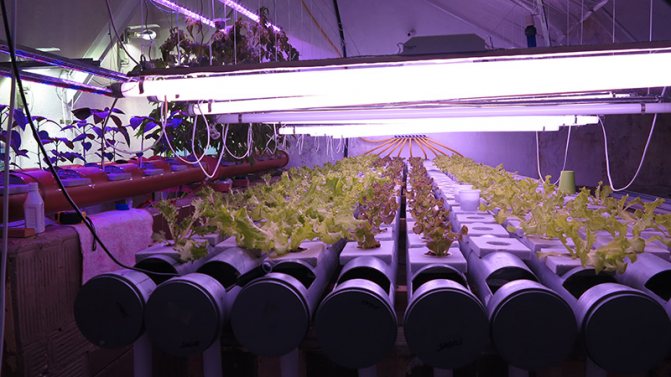

- it is advisable to use LED or fluorescent lamps for lighting;
- it is imperative to arrange drainage holes to drain excess moisture;
- drying of the substrate is not allowed. It should be kept moist at all times (but no excess water).
The use of backlighting leads to overdrying of the air. It is recommended to use humidifiers at home. Only settled filtered water is poured into the devices, otherwise salt deposits will appear on the landings. In winter, it is advisable to install an air conditioner.
Strawberries are pollinated by hand (at home), with the help of bees and small bumblebees (if the crop is grown on an industrial scale).
The nutrient solution is purchased in specialized stores, diluting the mixture in strict accordance with the instructions. The formulations contain macro- and microelements necessary for strawberries, while the proportions of substances are precisely verified.


From universal ready-made solutions for garden strawberries are suitable:
- Flora Gro;
- Flora Bloom;
- Flora Micro (see video).
It is quite difficult and time-consuming to prepare a solution with all the components with your own hands, while maintaining the norms of substances. It is easier to purchase a ready-made powder and make a solution. For mixing, use only distilled water.
Nutrient solution
For an unprepared user, the easiest way is to buy specialized ready-made solutions, dilute them according to the instructions in distilled water and pour them into the hydroponic system. However, this is the most expensive method and it is much cheaper to prepare such solutions on your own.


When buying specialized solutions, it is also necessary to take into account that average proportions are given on the labels, therefore, an individual approach is required for each type of plant.
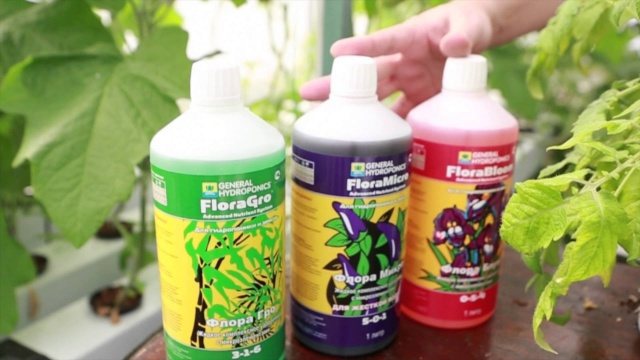

For more information on making a nutrient solution for growing strawberries, see the video:
Varieties suitable for hydroponic cultivation
In order for the hydroponic method to give a result, certain varieties of garden strawberries are planted. Traditional varieties of short daylight hours are not suitable, priority is given to hybrid and varietal forms of a long and neutral day.
The varieties received good reviews:
- "fresco";
- "Generous";
- Mount Everest;
- "Yellow miracle";
- "Gigella";
- "Vima zanta";
- "crown";
- "Olivia";
- "Elvira".
The listed types of strawberries are unpretentious, have a stable yield, and are resistant to diseases. Reliable foreign varieties (Holland, Italy), bred by breeders specifically for year-round crop cultivation.
Nutrient solution
When using the installation, plants are fed with mineral components that strawberries need for normal fruiting and growing green mass. Non-mobile and mobile components are used to make the nutrient solution. The first group includes:
- Calcium. Any feed composition must have calcium-containing substances that are needed for the development of the above-ground part of the plants.
- Bor. Needed by plants to improve the absorption of other micronutrients.
- Sulfur. Top dressing, which contains sulfur, is used to improve the taste of the ripe crop.
Among the mobile components, the following are distinguished:
- Nitrogen. The component is added to the solution in the first weeks of growing strawberries, as further the need for nitrogen gradually decreases. Most nitrogen is found in urea and ammonia.
- Phosphorus. Phosphorus-containing dressings are used during fruiting, flowering and active growth of the root system.
- Potassium. Potassium components improve the immunity of plants and make them more resistant to temperature extremes and diseases.


